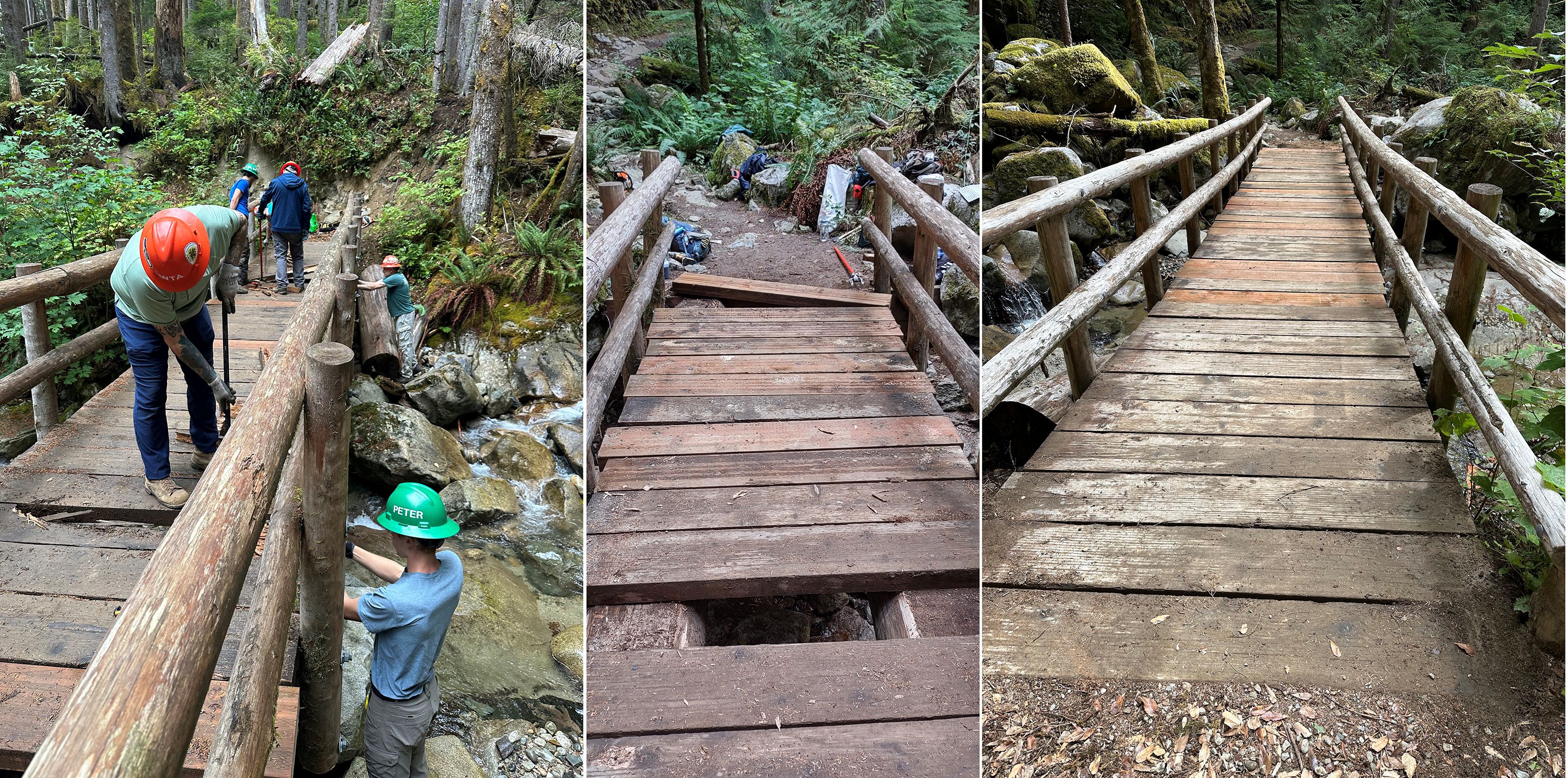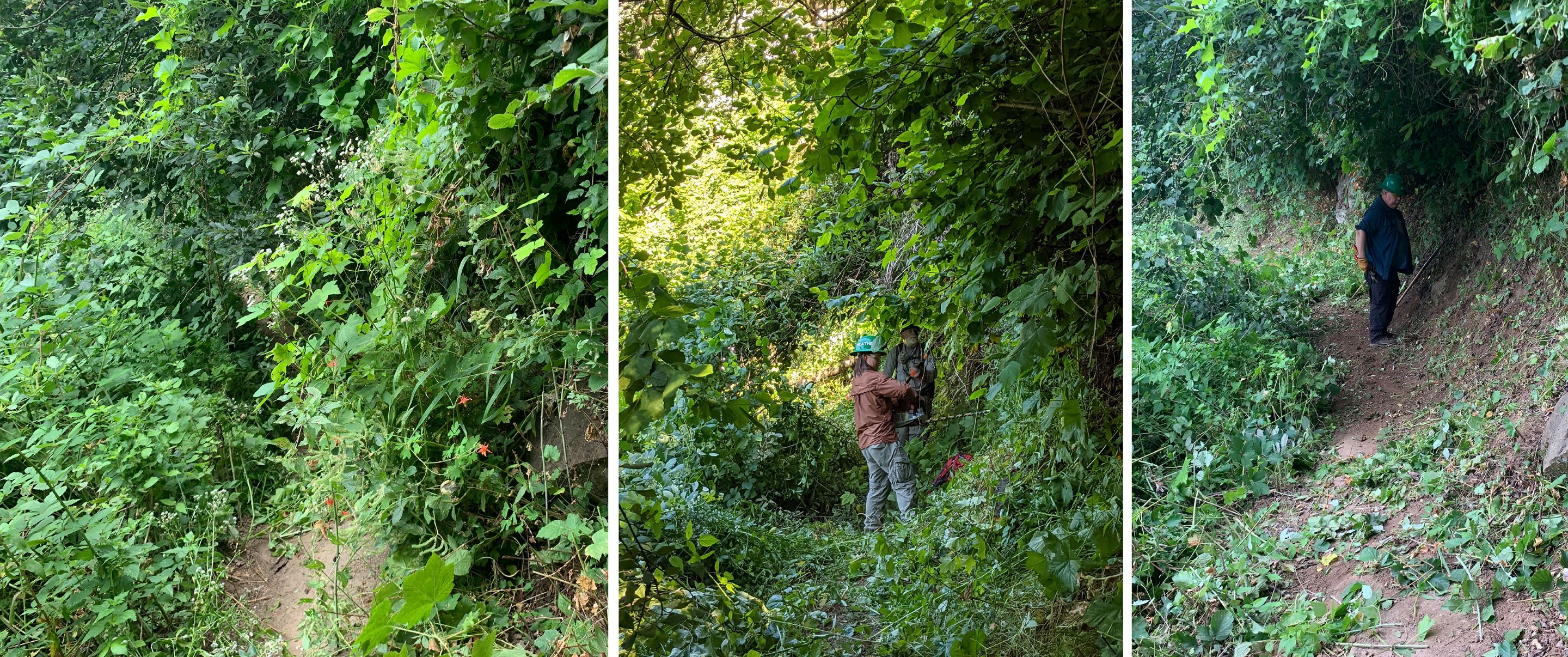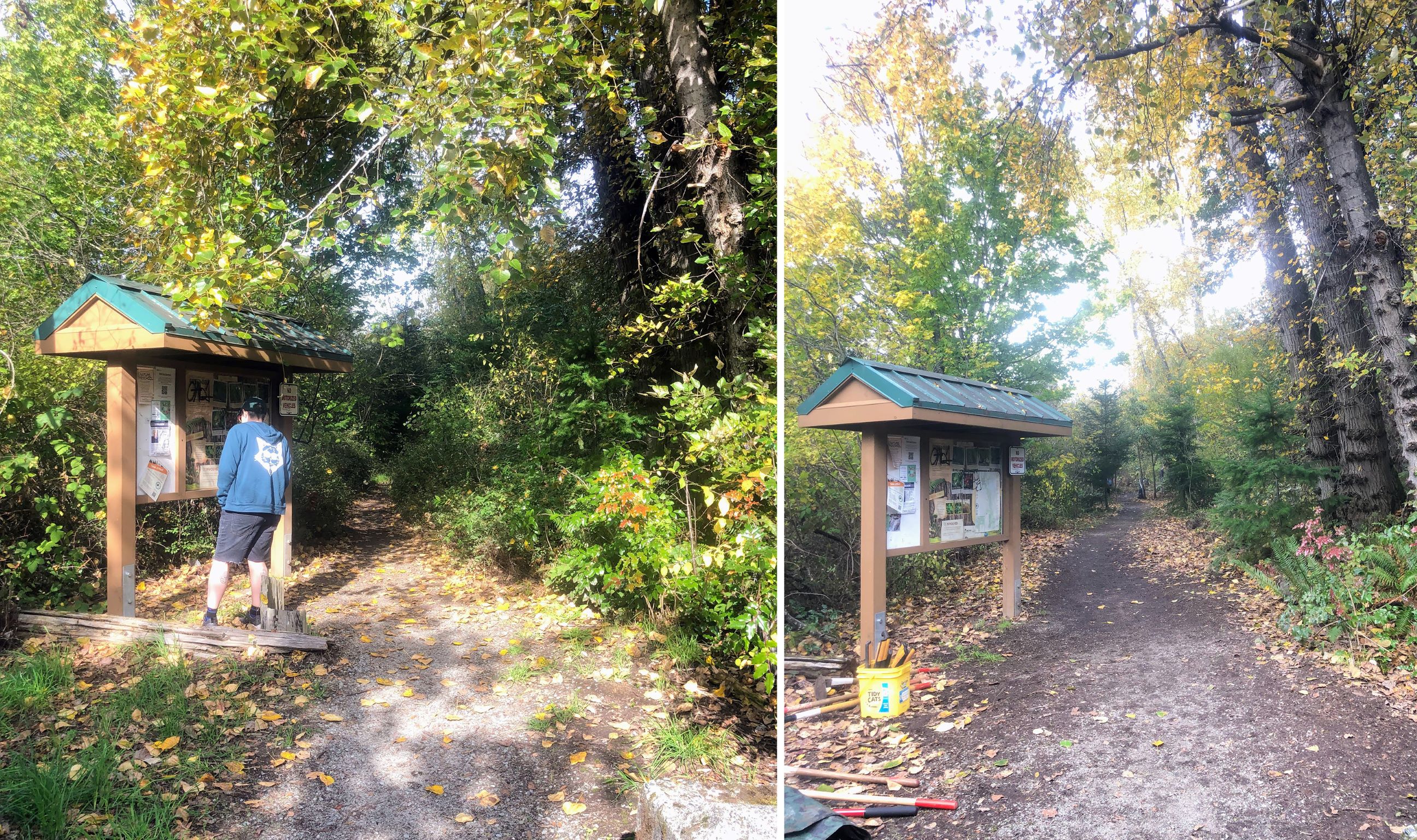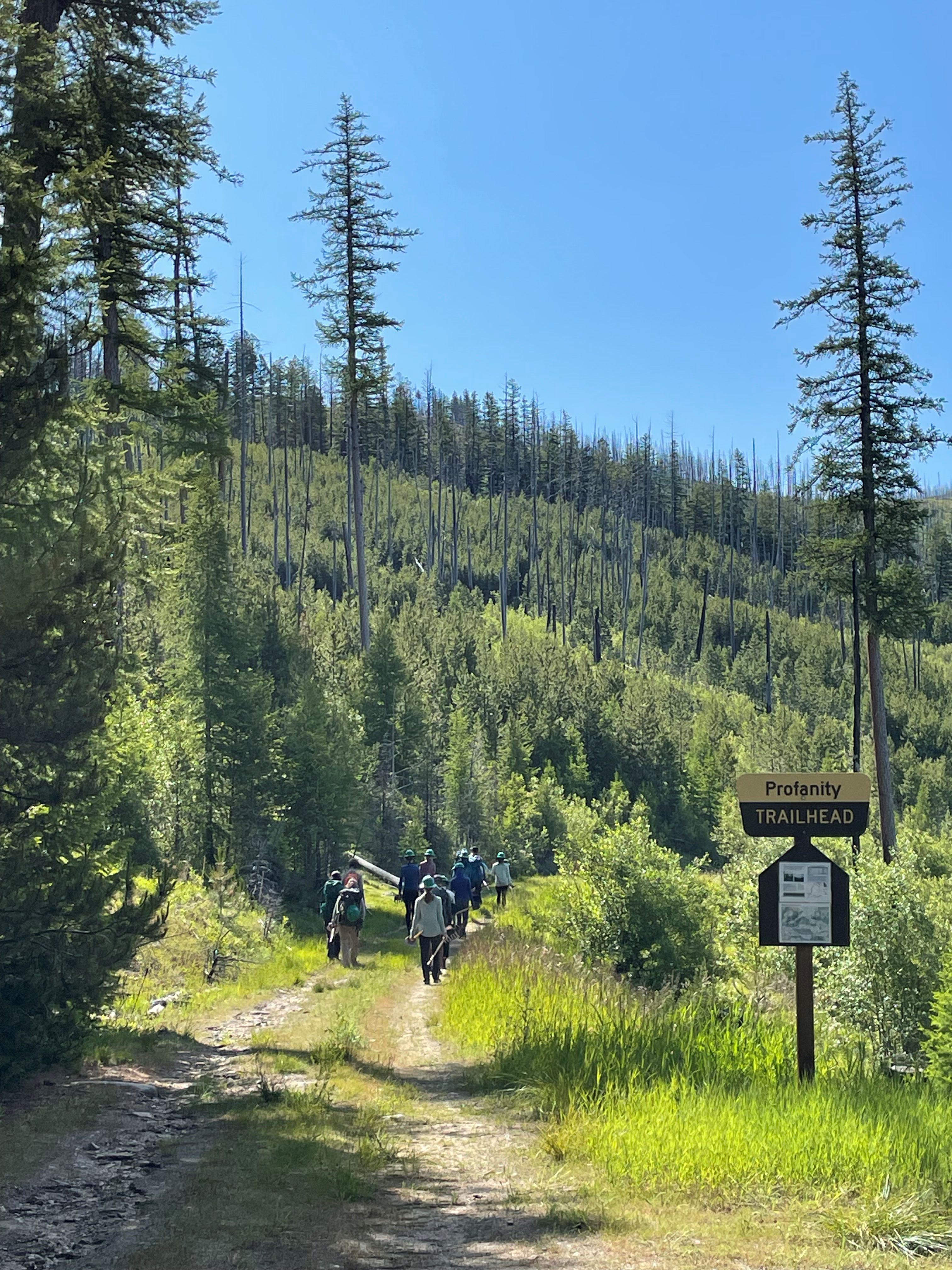Clearing Trails (and Our Story Queue): 6 Stories We Missed
All year long, all across the state, WTA volunteer crews maintain the trails you hike. Each volunteer contributes to fixed bridges, improved tread or other personally impactful projects, and there are more stories than we can tell in a year! Here are a few that slipped under the radar but we want to celebrate now.
All year long, all across the state, WTA volunteer crews work on the trails you hike. Each volunteer contributes to fixed bridges, improved tread or other personally impactful projects, and there are more stories than we can tell in a year! Here are a few that slipped under the radar but we want to celebrate now.
A quick fix, thanks to strong partnerships
WTA plans our work parties years in advance with land managers. But in 2023, a crew was activated in a matter of days to repair a footbridge on the Middle Fork Snoqualmie River Trail after a horse fell through it in August. The horse was rescued by Washington State Animal Response Team (WASART), and the Forest Service replaced the broken boards as a temporary measure.
After the incident, Back Country Horsemen of Washington (BCHW) reached out to WTA for support in replacing the bridge decking to prevent future incidents. Jay Adams of BCHW and WTA’s Emily Snyder handpicked a crew of 9 volunteers to quickly fix the damage. Though bridge projects often take days to complete, this crew finished in one go. Starting at 8 a.m., BCHW volunteers hauled the materials in and out, while WTA volunteers removed the old decking. They finished up 6 p.m. Great teamwork!

Volunteers made it out on a rapid response work party to fix the Rainy Creek Bridge, replacing 17 deck boards. Photos by Emily Snyder.
Spring cleaning on a Gorge(ous) trail
The lower portion of the Cape Horn Trail in the Columbia River Gorge is closed every year from Feb. 1 to July 15 for the peregrine falcon nesting season. That means the plants there — including massive amounts of blackberry and stinging nettle — grow unchecked along the trail all spring.
All that growth makes it a struggle to even see where to walk (see below). So every year, WTA crews and our partners from the Cape Horn Conservancy come in right when the trail opens to cut back the plants and make the trail hikeable again.
If you've ever hiked the lower trail and not been scratched by blackberry or stung by stinging nettle, you can thank a WTA volunteer!

Before, during and after our volunteers and members of the Cape Horn Conservancy worked together to clear the Cape Horn Trail. Photo by Lance Koach.
young volunteers cleared the way for communities to find nature nearby
We have an incredible community of volunteers, including young people who learn about stewardship and get a sense of what it’s like to work in the outdoors when they join us on trail. Here are some highlights from the youth volunteer year.
Blyth Park (Bothell)
The City of Bothell wants to improve and extend Blyth Park’s trail system, which has fallen into disrepair. Many visitors to the park don't even know the trail system exists, despite the park’s popularity with families and disc golfers. In spring, park staff provided photos of conditions and asked WTA how to go about fixing the slippery, soupy, muddy mess.
Over the summer, youth ages 14 and older volunteered at a series of work parties. They improved the drainage in the area and built a turnpike with materials found onsite. The turnpike is near the beginning of the trail, and not only makes the trail safer and more sustainable, it provides a welcoming invitation to visitors to explore the trails beyond.

A handful of youth crews helped fix the drainage issues the trails at Blyth Park would suffer from in wet weather. Photo by Kaci Darsow.
North Shorewood Park (White Center)
This park had narrow, rutted trail, a section of steps that needed to be repaired and one of the entrances was overgrown and unnoticeable. Thankfully, a number of youth volunteers were interested in working here, including Scout troops, school groups, and young Mountaineers. WTA even hosted youth and family volunteer work parties in the park to give families a chance to work together.
Volunteers cut back brush, widened and flattened the tread and lined the park’s entryway with rocks, making the entrance more welcoming and easier to see. On a section of eroding trail, volunteers installed nine new steps, and shaped the steps and added gravel. The work, along with drainage work above and below the steps, will make the trail easier to walk and help prevent future erosion problems. The trails are now safer and more accessible for locals, who are appreciative of the work. During the project, a neighbor came by to offer snacks to the crews as a thank you!
West Duwamish Greenbelt (West Seattle)
Another hardly-visible trailhead! Plus the trail corridor here was narrow with poor visibility, but youth crews did cut back a ton of brush and removed debris to clear the way. When the work was done, they’d re-established a welcoming 12-foot wide corridor, as our partner Seattle Parks and Recreation had hoped for.
As one of the young children of a family passing by a work party observed, "This used to be a tunnel, and now it's a trail!"

Before and after trail crews went through and cleared the West Duwamish Greenbelt trail — look at that wide corridor! Photo by Kaci Darsow.
A backpacking trip and some volunteering
Over the summer, WTA teamed up with teachers and youth from Spokane-based St. George's School to do some trail work during their 43-mile hike of the Kettle Crest. Holly Weiler, WTA’s senior Eastern Washington regional coordinator, met up with the group on day 2 of their weeklong trip.

Students from St. George's School hike into the work site on the Profanity Trail. Photo by Holly Weiler.
The crew worked on Profanity Trail, a short feeder trail to the Kettle Crest. Profanity Trail was heavily impacted by the Stickpin Fire in 2015. On the first day of the project, the crew re-established the tread at the upper portion of the trail where it meets the Kettle Crest.
It was so overgrown that Holly had a difficult time finding it. But by the time they finished, Profanity Trail was in such good shape that the crew also needed to clear the junction with the Kettle Crest Trail so hikers didn't accidentally mistake the newly-cleared Profanity Trail for the Kettle Crest Trail. After the work was done, the trail volunteers dropped their tools, picked up their packs, and hit the trail to continue their backpacking trip!
After the trip was over, their leader said the students had an entirely new appreciation for what it takes to maintain a trail, and they also experienced some sections of trail on the rest of their trip that had them wishing they still had the loppers and handsaws!
Join us! We’d love to see you out on trail! Check out upcoming trail work parties at wta.org/volunteer.


Comments